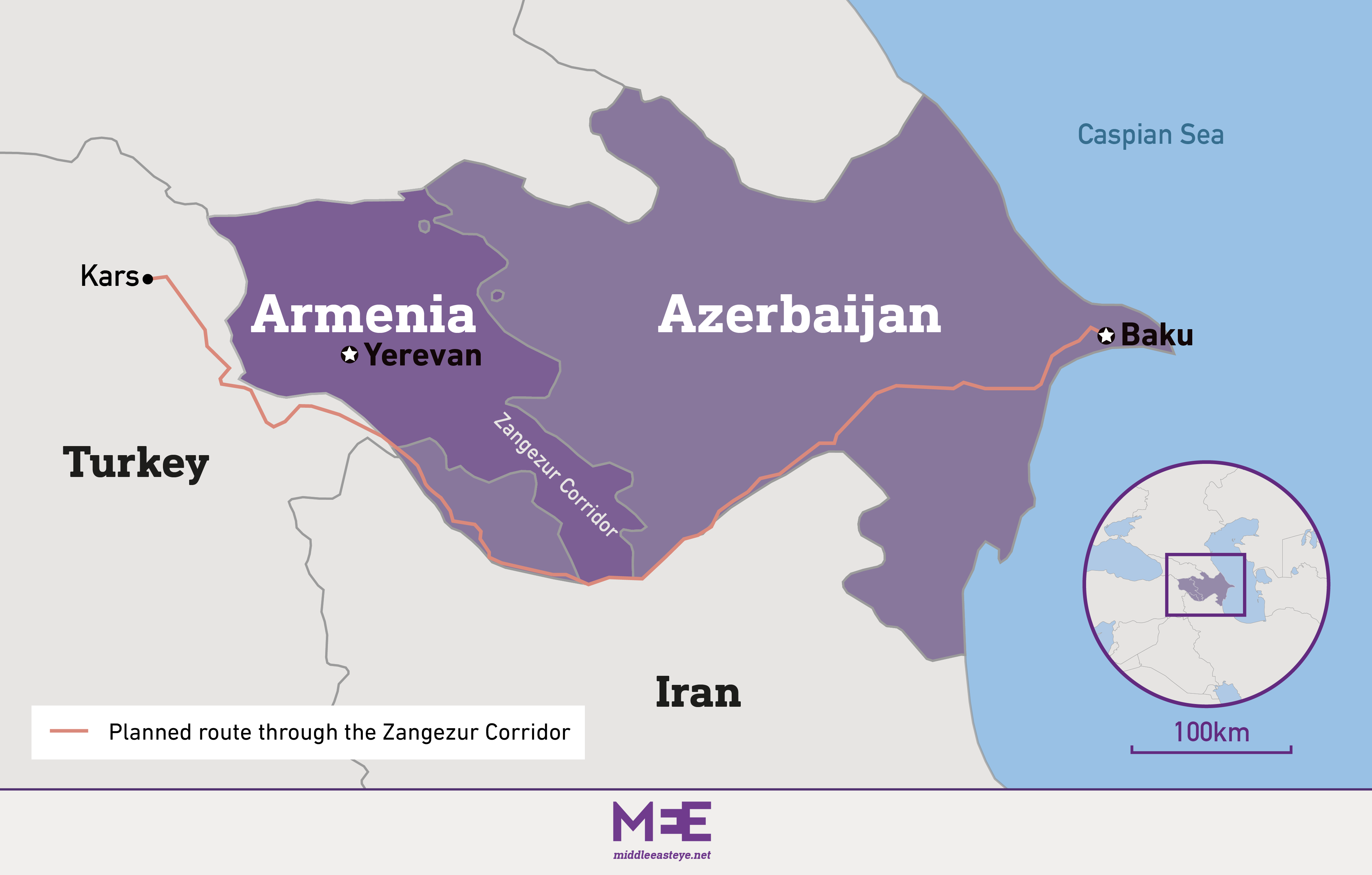Why the US-Backed Zangezur Corridor Could Revolutionize Eurasian Energy and Trade Routes

Zangezur Corridor: The U.S. Plan That Could Redraw Eurasian Energy Maps
High-Stakes Moves at the Heart of Eurasia
A major new proposal has thrust a narrow strip of land in southern Armenia into the spotlight of global geopolitics. As outlined in a recent Forbes report, the so-called Zangezur Corridor would forge a strategic transport link connecting Azerbaijan’s mainland to its exclave, Nakhchivan, by crossing Armenian territory. The project, now actively championed by Washington, aims to create a direct flow of trade and energy between Central Asia and Europe, circumventing Russia entirely and significantly lowering costs across the continent.
The logic behind the corridor’s promise is formidable. By establishing a seamless east-west route, the pathway unlocks new connections between the Caspian region’s rich resources and European markets. The Forbes analysis contends that annual trade passing through this route could reach an impressive $50–100 billion, due to improved logistics and lower barriers for the transit of oil, gas, and manufactured goods. European consumers would likely see tangible benefits, as energy imports could be both cheaper and more diversified—a particularly compelling prospect given political uncertainties affecting supplies routed through Russia.
The corridor’s design extends beyond freight. It would form a critical wedge in the infrastructure network known as the “Middle Corridor” or Trans-Caspian route, making it an essential part of Eurasia’s emerging logistics grid. Historically, the region has depended heavily on routes via Moscow, but by providing an alternative, the new artery would help make European markets less vulnerable to disruptions and price shocks originating from Russian policy or conflict.
Obstacles and Reactions from Regional Powers
However, the project is mired in complex political realities. Despite widespread speculation, Armenian officials have categorically denied leasing any part of Syunik, the province at the heart of the proposal, to foreign interests. Concerns in Yerevan run deep; any perceived reduction of sovereignty—especially through the handover of route management to external authorities—raises sensitive questions about national control and security.
For neighboring Iran, the stakes are equally profound. Tehran sees its status as a crucial land bridge to the Caucasus and Europe at risk. If the new corridor comes to fruition, Iran’s relevance as a regional transit hub could diminish, complicating export strategies and undermining its broader influence in South Caucasus dynamics. Both Armenia and Iran have voiced apprehensions that the establishment of a route under international oversight—particularly one with dominant U.S. or European management—could irreversibly shift local balances of power.
Meanwhile, Azerbaijan views the prospect with optimism. Baku has been a longstanding advocate for restoring this link, with the dual aims of boosting internal cohesion and taking full advantage of Europe’s hunger for diversified supplies. The potential for 15 million tons of cargo to move annually along this axis, as estimated by Azerbaijani authorities, underscores the scale of the anticipated impact on regional commerce.
Strategic Calculations and Transforming the Landscape
The current discussions are the latest iteration of a vision first formalized in trilateral agreements following the 2020 conflict in Nagorno-Karabakh. While those accords provided a legal basis for transit, ongoing disputes over border control and sovereignty have left the project in limbo. Recent diplomatic engagement between Armenia and Azerbaijan, including joint commissions for border delimitation and a willingness on both sides to seek pragmatic solutions, signal incremental momentum but do not guarantee swift progress.
For Western policy-makers, the calculus extends far beyond economics. Endorsing a pathway run by independent, international mechanisms is seen in Washington as a powerful lever to reduce Moscow’s regional sway and to redraw the lines of Eurasian energy and trade. Should the corridor fall under Western-supervised management, it would mark a seismic shift—diminishing the chokehold that traditional transit routes have granted Russia over European imports, and providing new leverage in the ongoing contest for global influence.
This larger contest is not simply about pipelines and freight. It is about the ability of outside powers to set the rules of connectivity and commerce across one of the world’s most strategically important crossroads. If realized, the Zangezur Corridor could become both a symbol and a tool of deeper integration between Europe and Asia, accelerating trade, redistributing geopolitical weight, and offering a blueprint for resolving long-standing rivalries through infrastructure rather than confrontation.
Pivotal Moments and the Future Outlook
Any breakthrough on the corridor’s construction hinges on political courage and deft diplomacy. Recent confidence-building steps, including Armenia’s openness to defining borders and pragmatic cooperation, indicate a recognition of mutual interest. Yet, domestic and regional resistance remains potent. For many in Armenia, the memory of past conflicts and the imperative to safeguard sovereignty animate robust opposition to externally controlled routes.
Looking ahead, the fate of the corridor will depend not only on regional actors but on the effectiveness of proposed international mechanisms. Should a durable consensus emerge and concrete steps be taken toward construction and operation, the entire energy and logistics landscape of Eurasia may change. A successfully implemented corridor could lower shipping times and costs, unlock new export channels, and alter the established flow of influence across Eurasia—presenting profound economic and strategic opportunities for all parties willing to engage.
As the discussions evolve, the global business community and energy sector will be watching closely. The stakes are monumental: Europe’s diversification efforts, the ability of Central Asian suppliers to reach new markets, and the shifting tectonics of great power competition all converge on this narrow corridor. Success, in this context, would represent not only the opening of a new route, but the dawn of a new era of East-West interdependence and regional cooperation.
